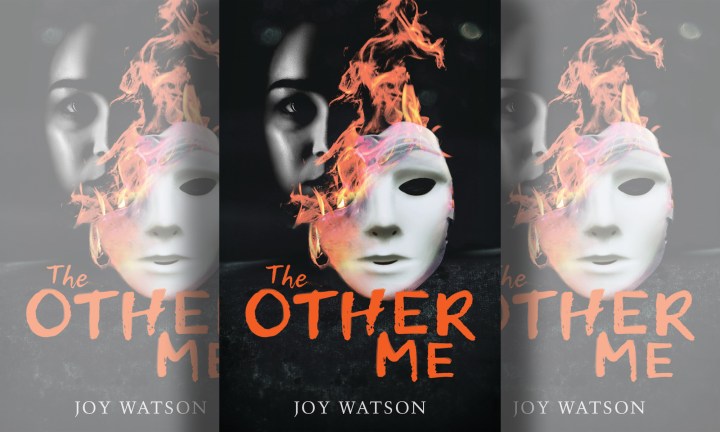BOOK REVIEW
Joy Watson’s ‘The Other Me’ is a sinister, psychological take on the masks we all wear

Author Joy Watson’s debut novel, ‘The Other Me’, is a gripping read about love, life and the harrowing lengths one woman will go to to survive.
The Other Me is a chilling page-turner from the heart of Cape Town seen through a character who, as she manipulates those around her, ensnares the reader in her web too.
The book is Joy Watson’s (a Maverick Life contributor) debut novel and is a testament to her work as a feminist researcher and academic as she presents complex discussions of femaleness and mental illness with nuance and a harsh realism – what happens when trauma goes uncared for? And can one escape the past?
The Other Me follows Lolly from childhood as she grows up in the Cape Flats with her brother and mother. The family stays in a Wendy house in a relative’s garden, and Lolly recalls taking care of her brother while her mother is out drinking at night and sleeping during the day. When her brother and mother both tragically pass away, Lolly is adopted by Sue Higgins, a white woman in Constantia, and taken in with her husband and own daughter.
“They’re the kind of people who don’t care about colour,” Lolly’s Aunt Ida tells her.
“Luckily, you’re very light-skinned, so you should fit right in.”
And so Lolly begins to shape her identity around what she perceives as fitting into her new circumstances. When she meets Sedick at university, who she goes on to marry, he assumes she is white and Lolly makes no attempt to correct him.
“I fit neatly into the picture of what [Sedick] wanted in life,” Lolly explains.
“He said the fact that I was white – big joke there – added to his drive. He wanted to give me the lifestyle that I was accustomed to.”
Lolly lets Sedick believe this. In fact, it is one of the secrets that she actively hides from her husband, as if doing so gives her the upper hand in their relationship.
And yet, this is something Lolly has done since she was a child. On her first night in the Higgins’ household, Lolly, realising she could not afford to be sent back to her relatives, decides she will do anything she can to fit in – to become a Higgins.
“If passing a test meant staying in this beautiful house, then my job was to figure out what to do. How to play the part of the girl Sue would want to have stay.”
As she grows up, Lolly believes that playing this part – putting on this mask – remains as important as it was when she was a child. She has to figure out how to keep Sedick where she wants him. And if he loves her for her assumed whiteness, and what he knows of her upbringing, she must fight for that façade to stay intact.
As time goes on and the novel progresses, the reader begins to realise that these secrets go far deeper than mere survival tactics.
If Lolly is the protagonist of her story, then the “Other Lolly” is the antagonist. The “other me” first makes an appearance after the death of Lolly’s brother and mother, reflected in the mirror on the day of the fire that took their lives.
“In the corner of my reflection, I was startled to see the outline of a face behind me, staring at me,” Lolly says.
“I tried to make out her features and realised, with a jolt, that she looked exactly like me. Like me, but different. Something about how she held herself told me that this girl was strong as steel. I knew instinctively that I should not look away. Then the Other Me smiled and said, ‘don’t worry Lolly. I’ve got this.’”
It would be remiss to speak about “Other Me” without bringing up the trauma and mental illness in Lolly’s life. One has to wonder how the pressure to conform to ideas of whiteness in 20th century South Africa had on her development. And as Lolly forces herself into the persona of a good, white, middle-to-upper class daughter, one can assume that the childhood traumas of tragedy and neglect were buried and went unresolved.
In Lolly’s fight for control in her life and those around her, “Other Me” makes more appearances. She is there when things are most dark, doing things that Lolly says she would never do.
As Lolly’s life implodes around her, “Other Me” begins to take over more and more. Lolly becomes isolated as she drives those in her life away, alone with only her own personal demon for company.
Lolly is a master manipulator, and yet, Watson has meticulously crafted a fallible protagonist that the reader can’t help but feel sorry for, even if you grow to hate her. By compartmentalising the bad parts of herself, Lolly is able to remain blameless, and her own fervent belief in her own lies could even manipulate the reader into rooting for her too; or even blame “Other Me” for her story and wish for Lolly’s redemption.
And that is the skill with which Watson has crafted this impeccable and provocative read, told from the perspective of a highly unreliable narrator.
Lolly’s story is one that sticks with the reader, even when the last page has been turned and the book is closed. Pass by a mirror and sneak a peek at the reflection. There is an “Other Me” in all of us. DM/ML
[hearken id=”daily-maverick/9416″]


















 Become an Insider
Become an Insider
Comments - Please login in order to comment.